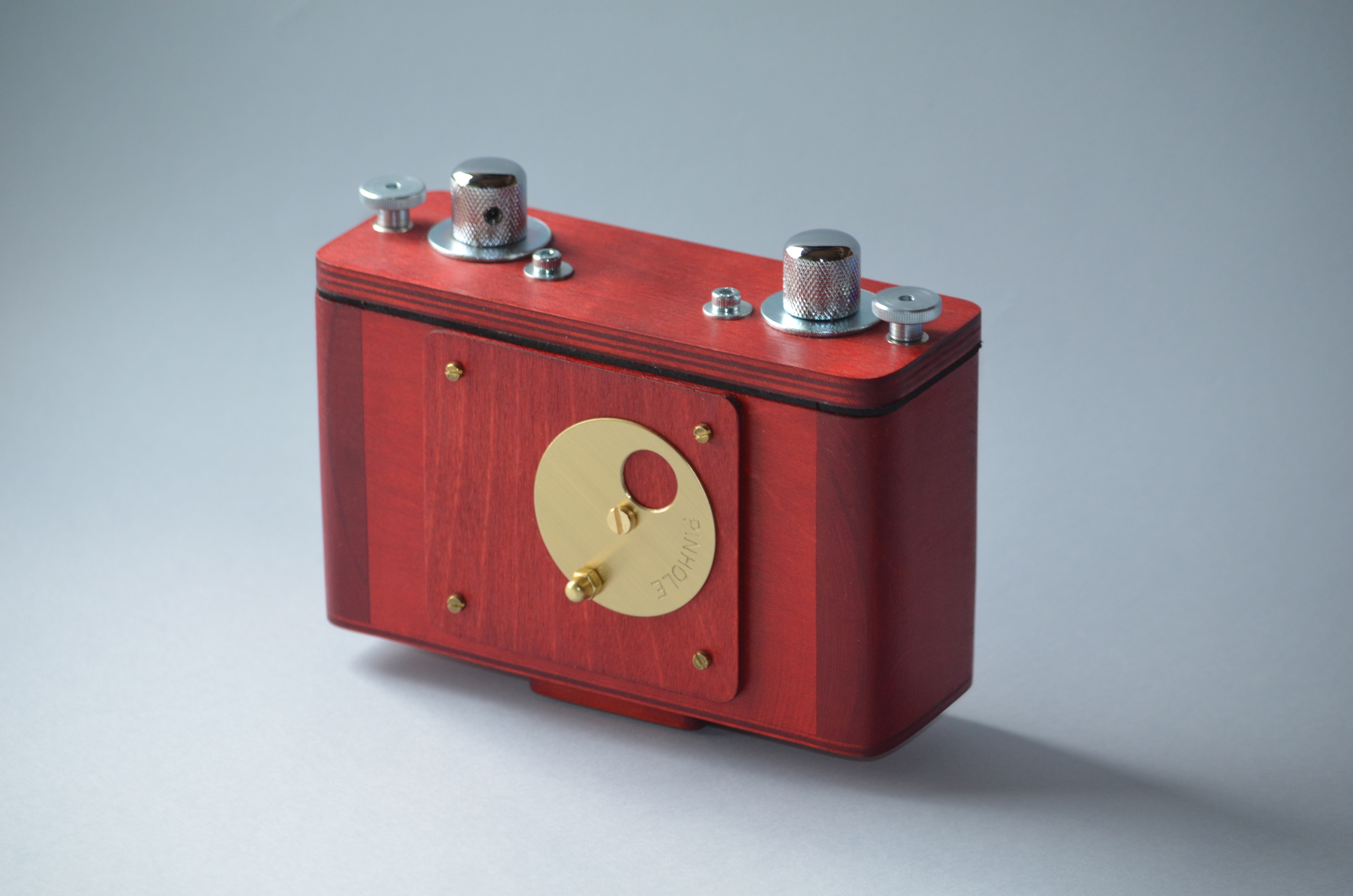We got to chat with Cezary Bartczak, a craftsman of pinhole cameras that are simply stunning.
“When customers from all continents send me sample images or links with pictures taken with cameras made with my own hands, it’s a great feeling, and I’m very proud of that,” says Cezary Bartczak, a maker of pinhole cameras who hails from Poland. A couple of weeks ago, we were introduced to this wonderful craftsman. When we dug a little deeper into Cezary’s work, we were blown away by his craftsmanship and the passion he has for his work. Immediately, we knew we had to have a sit down with him to find out more. Come find out about the world of custom camera making and what drives Cezary to make incredibly unique pinhole cameras.
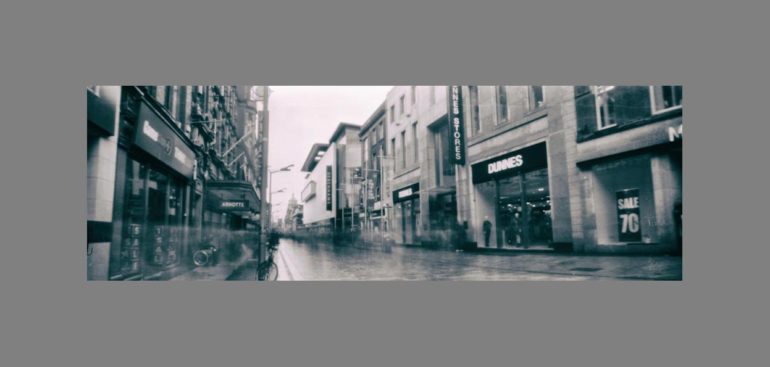
All of Cezary’s cameras are handmade from hardwoods, they are hand-painted and stained with care, and no detail is left untouched. They are works of art. It’s one thing to call yourself a photographer, but you’re on a whole different level when you can create and use the tools of our trade. Cezary’s curiosity about cameras drove him forward, and he has been making custom pinhole cameras ever since.
Find out more about Cezary and his adventures in camera making by checking out his website. We should also note that English isn’t Cezary’s first language. So we had to do some cleaning up in this interview.
I build cameras with passion and pay attention to every detail. I use traditional materials. Every camera is handmade, and I try to use as little plastic as possible. My goal is to make long-lasting, sturdy cameras with interesting, eye-catching designs.
Cezary Bartczak
Phoblographer: Cezary, welcome to The Phoblographer. Our readers would love to get you to know you better. Tell us a little about yourself and how your passion for photography started?
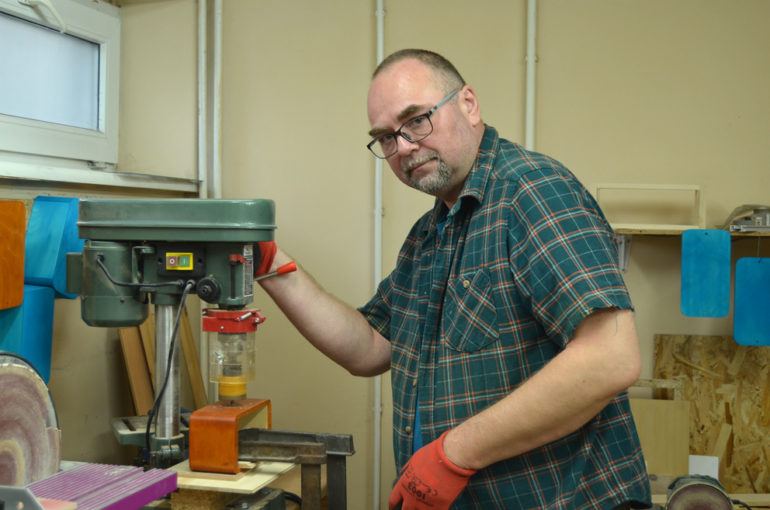
Cezary: My name is Cezary Bartczak. I’m a photographer and camera maker based in Wrocław/Poland. Like many kids, my first camera was a gift from my parents for the first Holy Communion day. The camera was a cheap plastic rangefinder. I started to shoot pictures, but I didn’t become obsessed with it. During high school, I purchased my first SLR camera with the money I made from holiday jobs. In my home town, there were two photography clubs: I was a member of one of them. They had a darkroom, and I learned about developing black and white film.
During college, I became a freelancer and shot documentary pictures for Wrocław University. After college, I worked for a few magazines. I shot photo stories, fitness sessions, and product photography. For a couple of years, I was also involved in child photography. Shortly before I started my camera making adventure, I also worked as a graphic designer for two printing companies.
Phoblographer: You started taking apart vintage cameras many years ago. What made you decide to tinker with cameras?
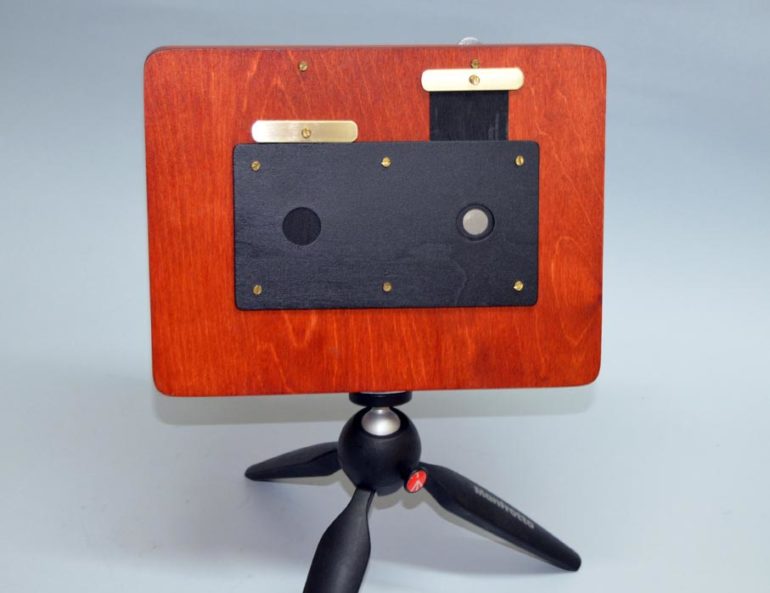
Cezary: This all started from pure coincidence. In a photography magazine, I found a tutorial about how to convert vintage cameras into pinhole cameras. I found a camera and made the changes exactly as described. However, I wasn’t pleased with the results. The camera model I chose wasn’t the best to start with. So, I purchased another camera and also converted it into a pinhole camera. I ended up making quite a few cameras this way. A few for myself and for friends. I also started to sell them.
Phoblographer: So, after taking apart and converting vintage cameras, what made you pursue your dreams of making your own pinhole cameras?
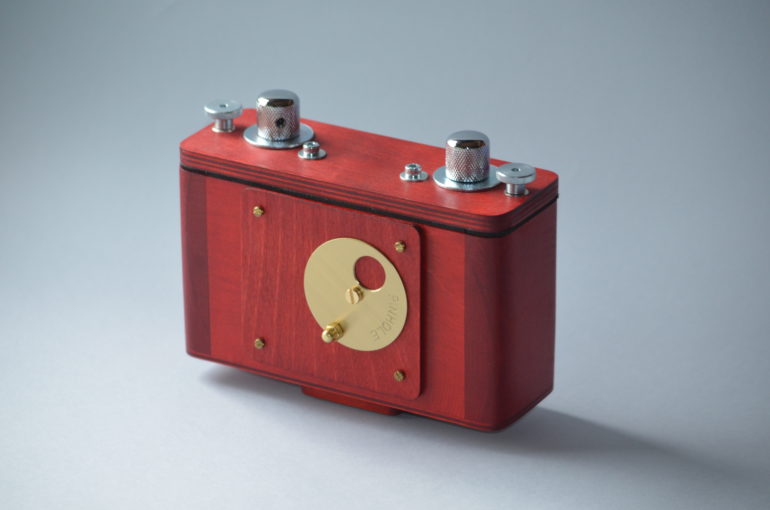
Cezary: I did not disassemble the vintage cameras only for fun; I used it as a learning process. I found out quickly that vintage camera conversion had some limitations. It’s hard to change the frame size, and the focal length can only be changed a small amount. I also thought that it might take more time to modify existing cameras than to build a new one from scratch. Around this time, I found a forum for pinhole photographers and camera makers. The forum was called F295. I discovered that many people were making their own cameras, and they shared their projects. The forum was a great source of inspiration.
Phoblographer: Tell us about the first camera that you made. What was it like, and do you still have it?
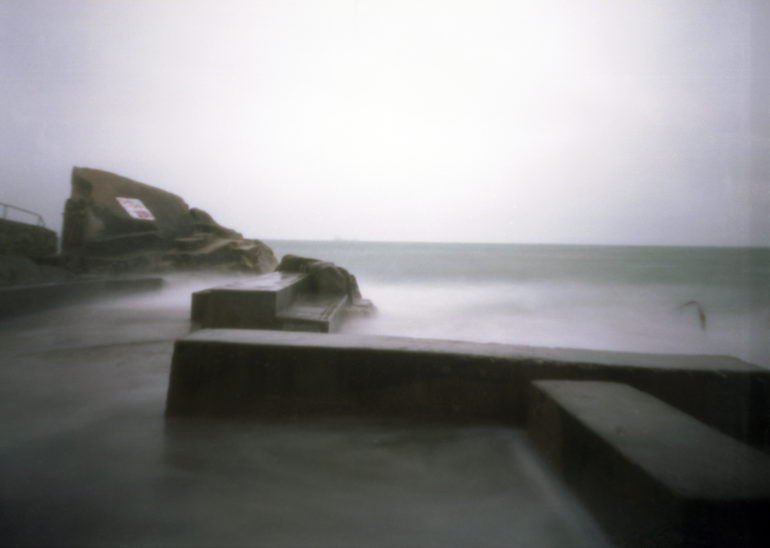
Cezary: My first pinhole camera was a conversion of a vintage camera, a medium format Ami 66. Around this time, I had converted a few similar cameras, and I still have and use one of them. The first pinhole camera I made from scratch was a wooden 6x6cm. The camera had a simple rotating shutter. It was made from yellow stained wood. I tested it by exposing a few rolls of film, and then I listed it on eBay. The camera was sold to a guy from Paris, France. The buyer owned a small factory of wooden toys. You could say that he became a beta tester of this camera. He has sent me many sample images and some suggestions on how to improve the cameras.
Phoblographer: You’ve come a long way and now offer several handcrafted pinhole cameras, including ultra-wide 35mm pinhole equivalents, curved plane options, and large format pinhole cameras. Why did you choose these particular formats?
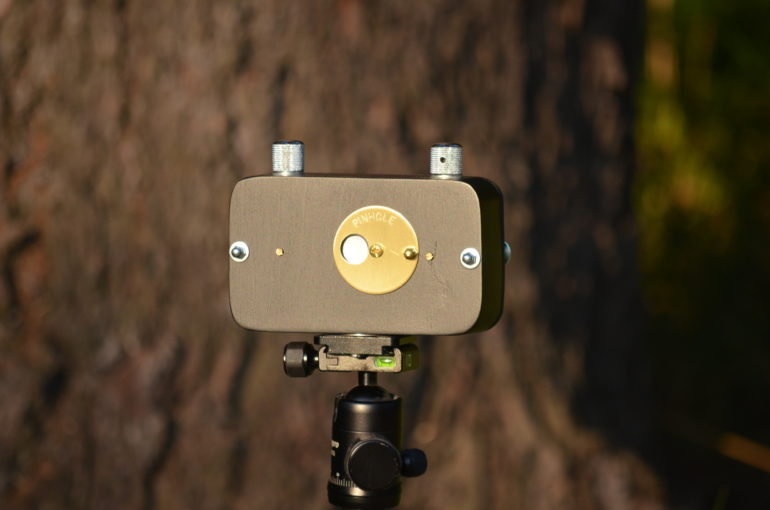
Cezary: I believe that medium format film gives better quality images than 35mm. The image area of 6x6cm is four times bigger than the standard 24x36mm. So, I decided to offer a full range of Medium Format cameras. I make and sell 6x4cm, 5cm, 6x6cm, 6x9cm cameras, a panoramic 6×12, and a curved plane 6×17. The problem is there are many cameras on the market, all made by small companies and craftsmen. I’ve found that people are looking for something unusual, so panoramic cameras are a must. A 35mm panoramic camera has enough film area (24x65mm) to produce good quality images. I’ve added it to my inventory, and it’s available in two versions; flat plane and curved plane. The flat plane camera has some light vignetting on the edges, but many people (including me) like that effect.
Large-format cameras offer excellent image quality, but they require more equipment and are much larger. You need to own a film holder and must have a place to load it. You also need a darkroom to develop it. A 4×5 inch camera might still be versatile and portable, but it’s tough to prepare to take 20 8x10inch pictures without a car. Large format cameras are also more versatile; they can be loaded with cut sheet film, photographic paper, and even x-ray film. They are a good option for alternative processes like cyanotype.
Phoblographer: You also offer a lens-based camera. What can you tell us about it?
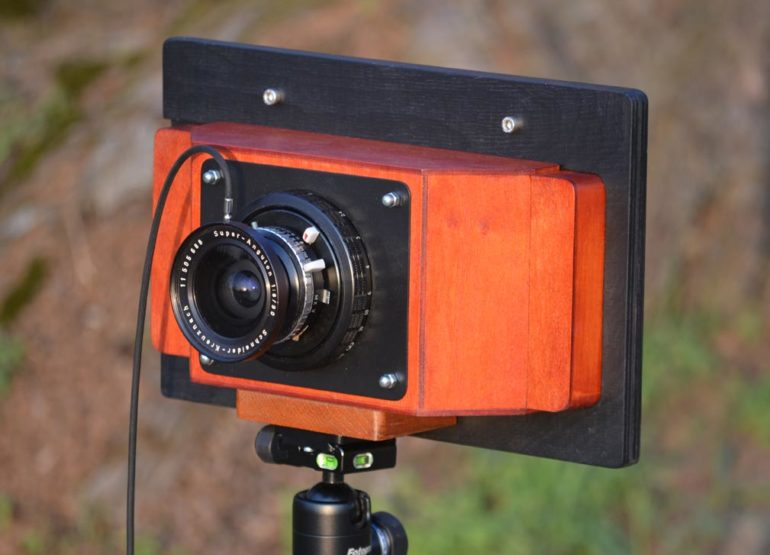
Cezary: There are many large format lenses in the marketplace. Some of the lenses are expensive, but there are also many vintage lenses (in excellent condition), which have very reasonable prices. These lenses are great for panoramic cameras like 6x12cm or 6x17cm. I’m also making omniscope and anamorphic cameras. These cameras fascinate me. In standard pinhole cameras, the “lens” axis is perpendicular to the surface of the film. In omniscope cameras, the axis is parallel. The film is wrapped around a pinhole aperture on circular film guides. The images are very distorted and appear wrapped at the edges. The effect is very unusual.
Phoblographer: What are some challenges that you face as a maker of handcrafted custom cameras?
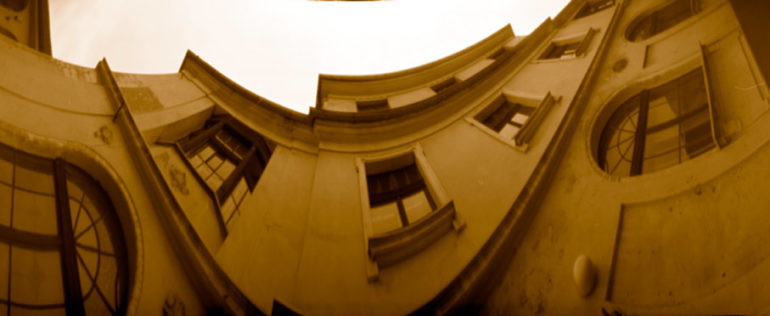
Cezary: There are a few challenges. First of all, camera making requires many skills and a lot of knowledge from different trades. You need to know woodworking, metalworking, and even bookbinding (helpful when you are going to make the bellows). When building for yourself, you can make some ugly parts. However, everything must be great if you’re going to sell your items. Attention to detail is a must. You need to own or have access to the machines and tools as well. Of course, you can design the parts and order them from a milling workshop. However, a quote from a Depeche Mode song comes to mind. “Everything counts in larger amounts.” You will welcome lower prices from milling workshops when you need to order 1,000 pieces every month, but ordering just five parts is a huge and costly problem.
Phoblographer: Your cameras are beautiful. Where do you get your design inspiration from, and how long does it take to make them?
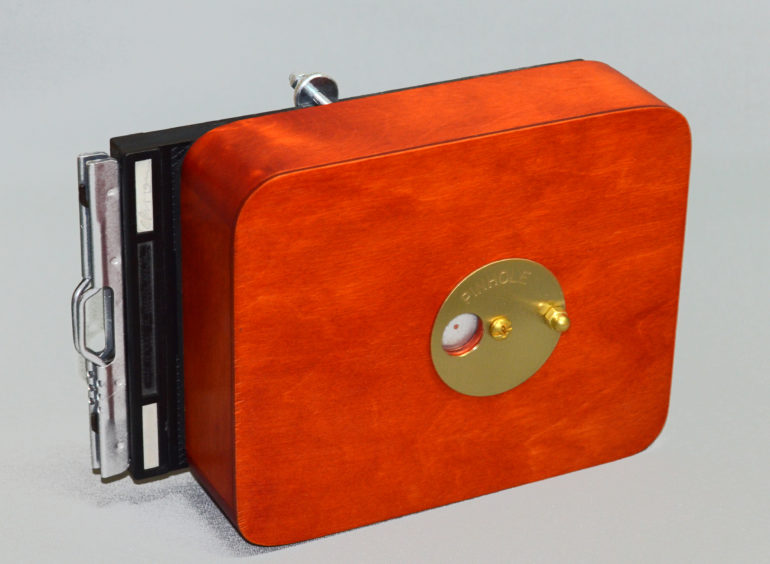
Cezary: Thank you for your kind words. I like vintage cameras that were made before World War II and from the turn of the 19th and 20th centuries. The materials used to build them were very sturdy, and they look noble. These cameras were usually made from hardwoods with brass details. My designs are contemporary versions of these vintage cameras. Making the cameras takes time. When I build a camera from scratch, it usually takes a few days, sometimes a week. For my popular models like the 6×17, 6×12, and 4×5 inch, I have dozens of boxes prepared and ready to go. I also stock some laser cut inner elements. The camera bodies just need to be stained, painted, and assembled. Having the bodies ready makes the process much shorter. One of these cameras can be prepared in around two days.
Phoblographer: What makes your pinhole cameras so much more unique than other cameras out there?
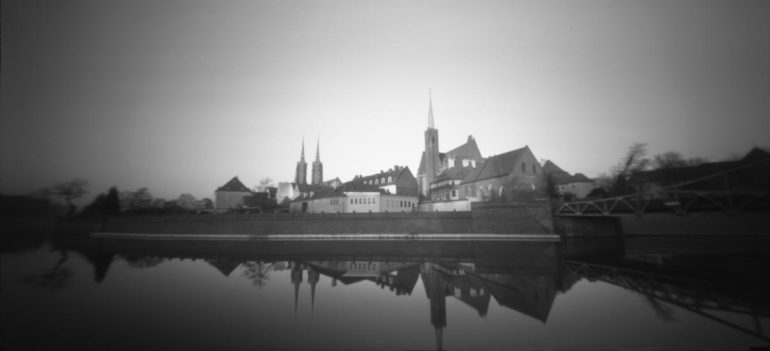
Cezary: I build cameras with passion and pay attention to every detail. I use traditional materials. Every camera is handmade, and I try to use as little plastic as possible. My goal is to make long-lasting, sturdy cameras with interesting, eye-catching designs.
Phoblographer: Do you have a personal favorite you have made?
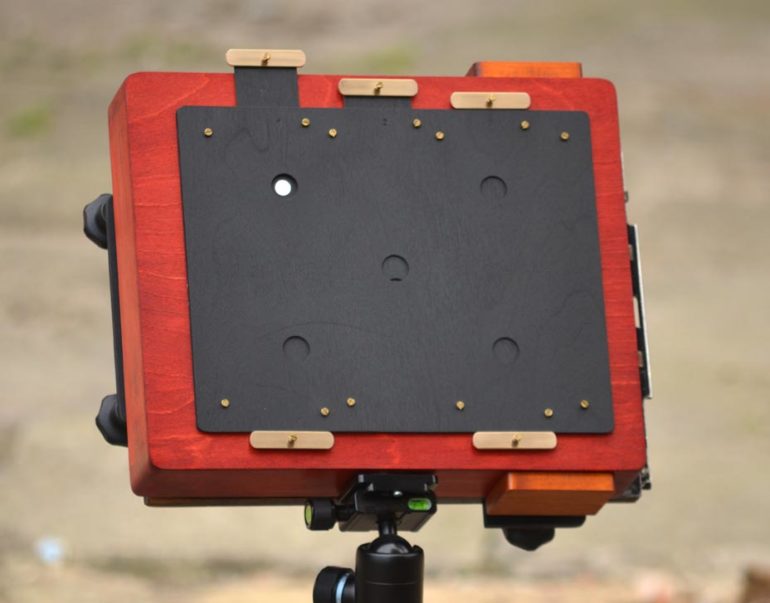
Cezary: I don’t have one particular camera that is my favorite. However, there are a few cameras which I adore. I made a series of large-format multiple pinhole cameras. I made an 8×10-inch camera with five pinholes, which can be opened separately. The camera captures five overlapping images that you can shoot in one spot. Each pinhole captures from a different angle of view. I have also made a 5x-inch pinhole camera with two pinholes. You can use this camera with a divider, and it produces two 3.5×5 inch images. Without the divider, the images will overlap.
Another favorite, a custom made 6x17cm camera with a Schneider Super Angulon 90mm lens. It also has an interchangeable film back. I made 6x17cm, and 6x12cm roll film backs, and a holder for a wet plate. I also made a 6×13.5cm curved plane pinhole camera, which I produced with plywood that I warped in hot water. Only one prototype has been made (making it was time-consuming). The camera is very light and robust and is perfect for taking on trips.
Phoblographer: How does it make you feel knowing you’re creating a product that people will appreciate, and that will help so many get in touch with their creative side?
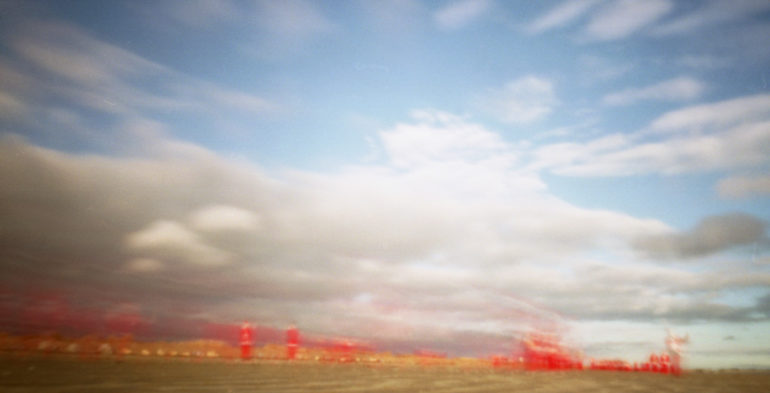
Cezary: I’m thrilled, and for me, this is also very exciting. Many people leave feedback and tell me that my cameras are beautiful and well made. The feedback helps me remember that cameras are a tool and a key to creativity. As we know, good quality tools are always welcome. When customers from all continents send me samples images or links with pictures taken with cameras made with my own hands, it’s a great feeling, and I’m very proud of that.
Phoblographer: Do you have any advice for those who are thinking about making their own pinhole cameras?
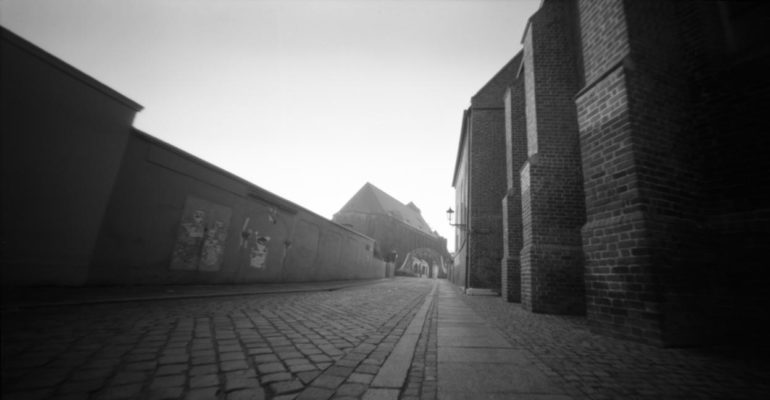
Cezary: My advice is to start with something that’s not complicated and never give up. An easy way to build a camera is to use a roll film holder. You need only to make a front with a shutter, pinhole (or lens), and a tripod socket. If you don’t have many tools, use ready-made boxes, like cigar boxes or wine bottle boxes. You can now also 3D print, or you can use laser cut plywood. The internet is packed with files to download. Search for open source projects, which are free of charge for personal use. There are many groups and forums which are filled with camera makers. If you need help with technical questions, you can always find help in these groups.
Phoblographer: What’s next for Cezary? Feel free to let our readers know what might be happening in the future.
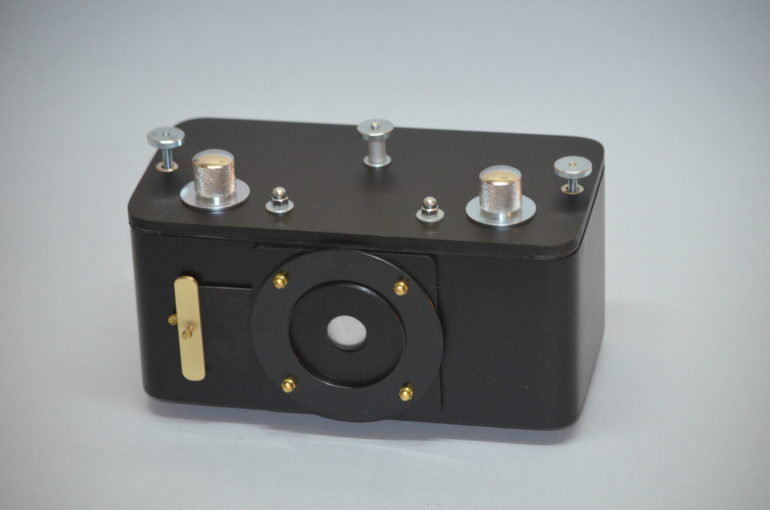
Cezary: I have many exciting plans. I want to improve the curved plane camera designs and add new models. The testing of a 6x24cm pinhole camera has started, and I’m going to focus on large format cameras with bellows. I have a 4×5 inch camera prototype with a focusing system that’s almost ready.
If you’d like to pick up a pinhole camera or find out more about Cezary and his adventures in camera making, check out his website. Stay tuned to The Phoblographer for more original interviews.


